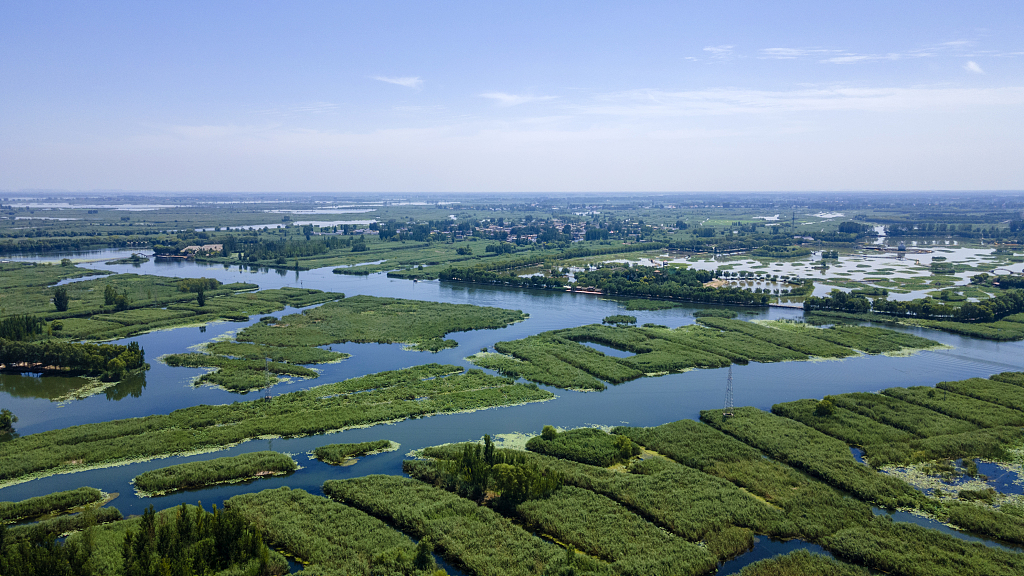
A view of Baiyangdian Lake in Xiong'an New Area, north China's Hebei Province /CFP
During the summer months, Baiyangdian Lake in Hebei Province comes alive with vibrant greenery and the captivating sight of overlapping lotus leaves attract a multitude of visitors. As one of the largest freshwater lakes on the North China Plain, Baiyangdian Lake has gained recognition as the "Pearl of North China" due to its breathtaking scenery and unique ecological functions.
Baiyangdian Lake occupies an important location in the ancient basin of the North China Plain. Throughout the Northern Song Dynasty (960-1127), the imperial court continually expanded the marshlands, resulting in the formation of a meandering "Water Great Wall." Over time, Baiyangdian Lake has remained steadfast in fulfilling crucial ecological roles from storing floodwater to regulating the climate and replenishing groundwater.
In April 2017, China announced their plans to set up the Xiong'an New Area, which is situated in the three counties surrounding Baiyangdian Lake, namely Xiongxian, Anxin and Rongcheng counties, along with the surrounding areas. Since its establishment, significant efforts have been made to comprehensively improve the environment around the lake.

The lotus-covered waters of Baiyangdian Lake in Xiong'an New Area, north China's Hebei Province /CFP
The beautiful landscape surrounding Baiyangdian Lake has also witnessed heroic stories in defense of the homeland. In 1937, the July 7 Incident, or the Lugou Bridge Incident, broke out, leading to the full-scale Japanese invasion of China. Serving as a crucial waterway, Baiyangdian Lake was an important waterborne transportation hub and a strategic location. The Japanese militarist aggressors had long coveted this water route as a vital supply line for their invasion.
In 1938, when the Japanese army occupied Anxin County in Hebei Province, the local hunters organized themselves to resist the Japanese invaders. This group of local hunters later named the Yanling Regiment, continued to ambush the enemy and expanded their ranks.
From its establishment in 1939 until 1945, through more than 70 waterborne guerrilla battles against the Japanese puppet troops, the Yanling Regiment ambushed patrol boats, and launched devastating attacks on supply ships. Using small boats, homemade guns and cannons, they effectively disrupted the enemy's water transportation line.
Nowadays, the smoke of battle over Baiyangdian Lake has long since dissipated. The legendary stories of the Yanling Regiment served as the inspiration for the movie "Zhang Ga, the Soldier Boy" written by author Xu Guangyao. The image of Zhang Ga, the young anti-Japanese warrior from Baiyangdian Lake, has become widely known through the silver screen and he has been adopted as a role model by several generations of Chinese children.














